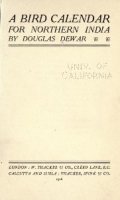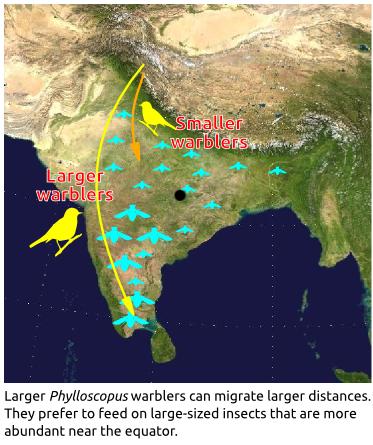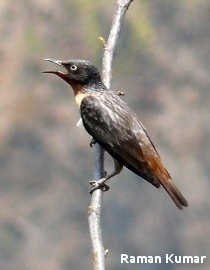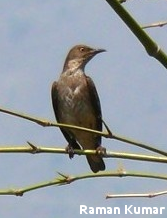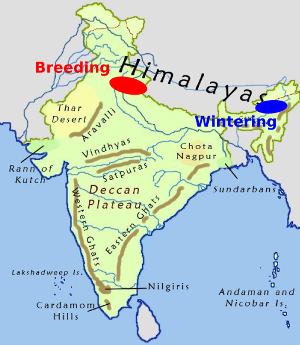Douglas Dewar again enthralls us with a vivid description of July in his A Bird Calendar for Northern India, published in 1916.
|
In July India becomes a theatre in which Nature stages a mighty transformation scene. The prospect changes with kaleidoscopic rapidity. The green water-logged earth is for a time overhung by dull leaden clouds…the rain pours down in torrents, enveloping everything in mist and moisture. Suddenly the sun blazes forth with indescribable brilliance and shines through an atmosphere, clear as crystal, from which every particle of dust has been washed away. …the winged termites appear after the first fall of the monsoon rain. These succulent creatures provide a feast for the birds The ever-vigilant crows are of course the first to notice a swarm of termites… The kites are not far behind them. These great birds sail on the outskirts of the flight, seizing individuals with their claws and transferring them to the beak while on the wing. A few king-crows* and bee-eaters join them. On the ground below magpie-robins, babblers…and other terrestrial creatures make merry. If the swarm comes out at dusk…bats and spotted owlets join those of the gourmands that are feasting while on the wing. The earth is now green and sweet…the pied crested cuckoo uplifts his voice at short intervals. In July the black-breasted or rain-quail (Coturnix coromandelica) is plentiful in India. Much remains to be discovered regarding the movements of this species. It appears to migrate to Bengal, the United Provinces, the Punjab and Sind shortly before the monsoon bursts, but it is said to arrive in Nepal as early as April. It would seem to winter in South India. It is a smaller bird than the ordinary grey quail and has no pale cross-bars on the primary wing feathers. July marks the end of one breeding season and the beginning of another…In the present month the last of the summer nesting birds close operations for the year, and the monsoon birds begin to lay their eggs. July is therefore a favourable month for bird-nesting. The paradise flycatchers leave Northern India and migrate southwards a few weeks after the young birds have left the nest. The nesting season is now at its height for…the various babblers and their deceivers—the brain-fever birds and the pied crested cuckoos. In order to satisfy it the unfortunate foster-parents have to work like slaves, and often must they wonder why nature has given them so voracious a child. When it sees a babbler approaching with food, the cuckoo cries out and flaps its wings vigorously. Sometimes these completely envelop the parent bird while it is thrusting food into the yellow mouth of the cuckoo. Numbers of young bee-eaters are to be seen hawking at insects; they are distinguishable from adults by the dullness of the plumage and the fact that the median tail feathers are not prolonged as bristles. Of the scenes characteristic of the rains in India none is more pleasing than that presented by a colony of nest-building bayas or weaver-birds… Every bird-lover should make a point of watching a company of weaver-birds while these are constructing their nests. |
* Current name Black Drongo
Taken, with grateful thanks, from Project Gutenberg.

